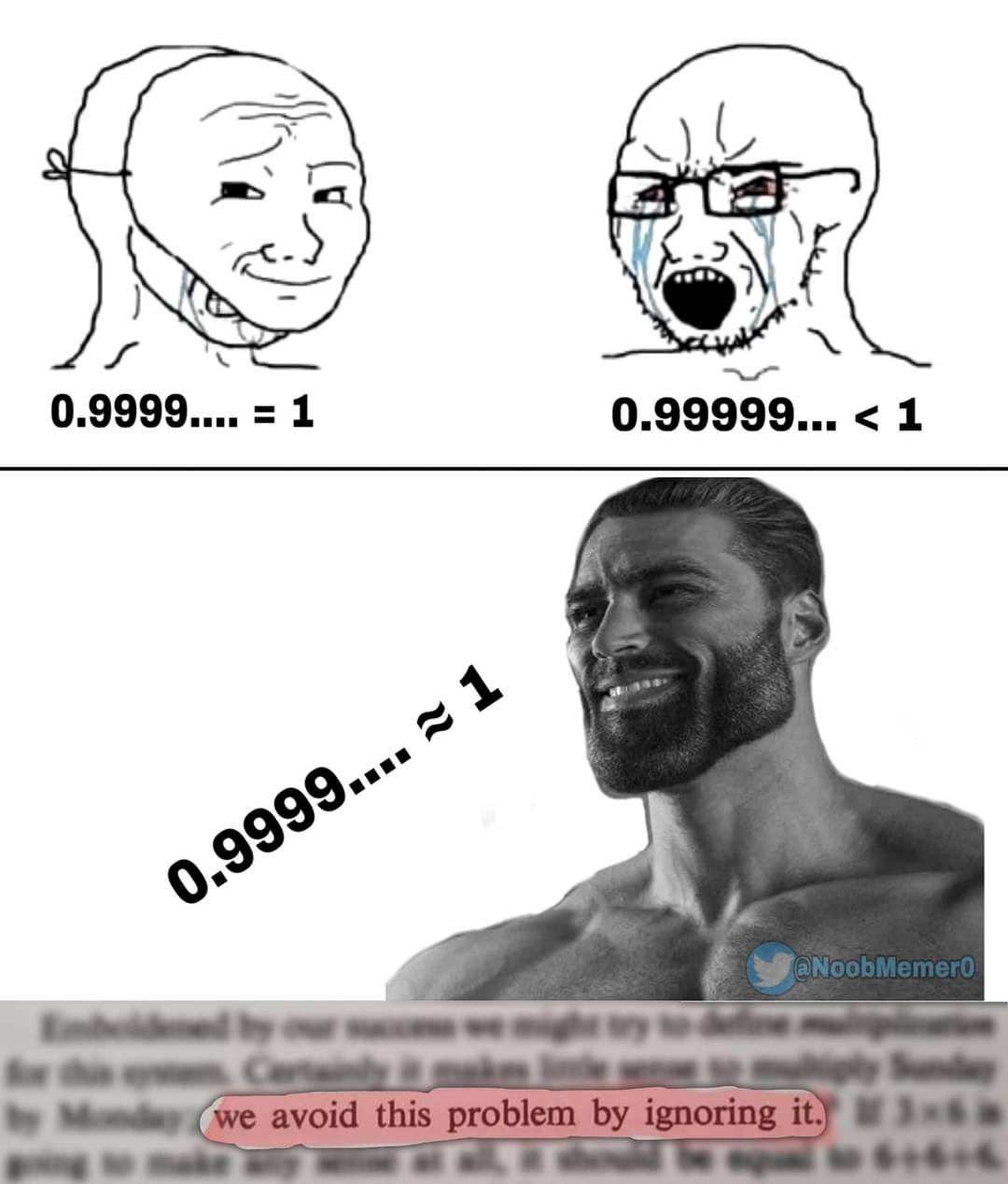this post was submitted on 27 Jun 2024
802 points (95.2% liked)
Science Memes
13995 readers
2678 users here now
Welcome to c/science_memes @ Mander.xyz!
A place for majestic STEMLORD peacocking, as well as memes about the realities of working in a lab.

Rules
- Don't throw mud. Behave like an intellectual and remember the human.
- Keep it rooted (on topic).
- No spam.
- Infographics welcome, get schooled.
This is a science community. We use the Dawkins definition of meme.
Research Committee
Other Mander Communities
Science and Research
Biology and Life Sciences
- [email protected]
- [email protected]
- [email protected]
- [email protected]
- [email protected]
- [email protected]
- [email protected]
- [email protected]
- [email protected]
- [email protected]
- [email protected]
- [email protected]
- [email protected]
- [email protected]
- [email protected]
- [email protected]
- [email protected]
- [email protected]
- [email protected]
- [email protected]
- [email protected]
- [email protected]
- [email protected]
- [email protected]
- !reptiles and [email protected]
Physical Sciences
- [email protected]
- [email protected]
- [email protected]
- [email protected]
- [email protected]
- [email protected]
- [email protected]
- [email protected]
- [email protected]
Humanities and Social Sciences
Practical and Applied Sciences
- !exercise-and [email protected]
- [email protected]
- !self [email protected]
- [email protected]
- [email protected]
- [email protected]
Memes
Miscellaneous
founded 2 years ago
MODERATORS
you are viewing a single comment's thread
view the rest of the comments
view the rest of the comments

The explanation I've seen is that ... is notation for something that can be otherwise represented as sums of infinite series.
In the case of 0.999..., it can be shown to converge toward 1 with the convergence rule for geometric series.
If |r| < 1, then:
ar + ar² + ar³ + ... = ar / (1 - r)
Thus:
0.999... = 9(1/10) + 9(1/10)² + 9(1/10)³ + ...
= 9(1/10) / (1 - 1/10)
= (9/10) / (9/10)
= 1
Just for fun, let's try 0.424242...
0.424242... = 42(1/100) + 42(1/100)² + 42(1/100)³
= 42(1/100) / (1 - 1/100)
= (42/100) / (99/100)
= 42/99
= 0.424242...
So there you go, nothing gained from that other than seeing that 0.999... is distinct from other known patterns of repeating numbers after the decimal point.